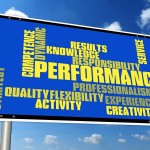The LMS is by name a ‘management’ tool but this is such an outdated description. A robust modern LMS is a very flexible software platform that can do so much more than simply ‘manage’ learning and development. Let’s look at some ways that your LMS can be leveraged to achieve tangible competitive advantages for your organisation. 

- Promote the fact your organisation uses a LMS to offer learning and development opportunities for your people that go beyond mandatory and/or compliance training. By doing this you will attract talented people to your organisation and may help to persuade high quality candidates to choose your organisation over others they are considering.
- Engage prospective employees and recruits early by offering them access to the LMS to undertake learning about your organisation, its culture and its mission. Most learning management systems support multiple external login pages and automated processes. Collect names and emails of persons who visit this site and stay in touch.
- Open the LMS up to subject matter experts in your organisation and support them in creating content to share their expertise with others. You should consider both formal and informal learning developed by experts in your organisation. This will not only be a boost to your learning culture it is also a way to prevent ‘brain drain’ when people leave your organisation. Most people know how to use Microsoft Powerpoint. Check out Microsoft Mix as a way to create high quality SCORM content in Powerpoint without having to learn a new authoring tool. You should also check out Office Sway for content authoring.
- If your LMS supports multiple domains or multi-tenant structures, create learning environments for your resellers, partners and suppliers. Keep these key stakeholders up to date with information about your organisation and its products and services. Using your LMS is far more effective since you will be able to enrol and track persons who need to view your content.
- Develop a Learning Academy that showcases your thought leadership. The learning academy may include e-commerce for some or all courses. We have developed learning academies for clients that have attracted global audiences and translated to increased revenue and strategic partnership opportunities.
- Use your LMS to communicate frequently and effectively with your people. One of the biggest contributors to lack of execution is people not understanding or seeing alignment between their work and the organisation strategy. Create learning modules that explain the strategy and how it applies to persons throughout the organisation. It is important to cater for all learning styles so use graphs, pictures, audio and video. You can easily record senior managers in your organisation explaining strategy, goals and objectives and distribute these using your LMS to support other communication channels. In the LMS you can ask for feedback and track the people and frequency of viewing.
- Utilise your LMS reporting tools to support improved strategic and tactical decision making. An enterprise LMS should have extensive reporting capabilities to deliver data that identifies future skills gaps that may impact your organisation’s ability to meet future requirements. Some of our clients have used predictive data to assemble project teams in a number of areas such as product development, entering new markets and creating new business units. A modern LMS should support integration and data sharing so that it becomes a part of your information architecture and not operating as a ‘island’ with limited strategic value.
